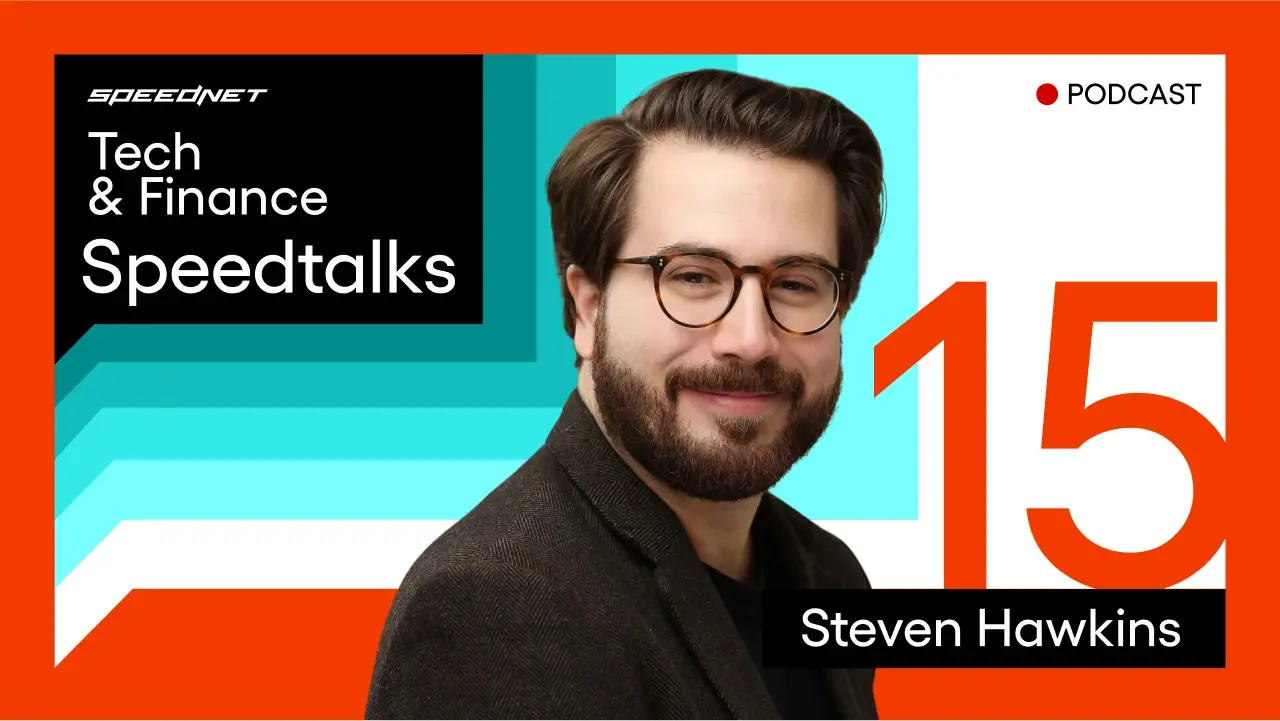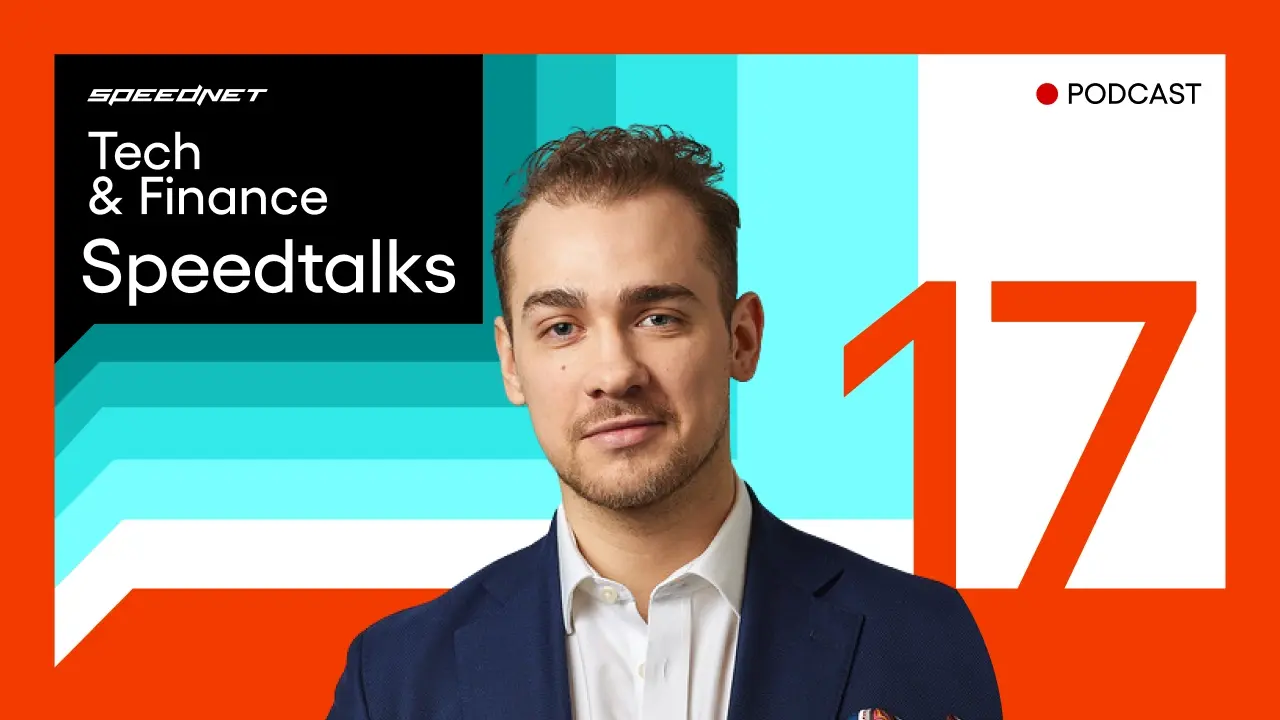015: Engineer's view to sustainable technology in banking


Transcription:
Michał Grela: Hello and welcome to Speedtalks, a podcast about everything tech in the financial services industry. I’m Michael, and today we have a fascinating discussion ahead about sustainable banking and the role of technology in shaping a greener future. Our guest is Steven Hawkins of ClearBank, who is deeply involved in developing sustainable solutions in the banking sector. We’ll cover everything from how digital products contribute to emissions to whether banks truly care about sustainability and what the future holds for green finance. Whether you’re in fintech, banking, or just interested in how tech can drive sustainability, this episode is for you. Let’s dive in.
Steve, thank you for joining us today.
Steven Hawkins: Thank you for inviting me.
Michał Grela: To begin, could you tell us more about your role and responsibilities? What initiatives are you working on daily?
Steven Hawkins: Of course. I’m a Principal Engineer at ClearBank, and my role is to understand the challenges and opportunities both within the organisation and among our product engineering teams. My focus is on bringing people and data together to enable better decision-making. This could mean introducing architectural decision records, running a tech radar, or conducting well-architected framework assessments. Essentially, we’re building cross-cutting capabilities that help our engineers develop better software products that deliver value to both the organisation and customers.
One of our recent initiatives was setting a target to have 80% of our product and engineering employees certified as Green Software Practitioners
On the sustainability front, one of our recent initiatives was setting a target to have 80% of our product and engineering employees certified as Green Software Practitioners. This is a Linux Foundation-backed certification that provides great education on topics like identifying emissions sources in software, measuring them, and optimising for better quality, lower costs, and reduced emissions.
Michał Grela: Well, now I have a list of great questions, so let’s start one by one. So when we talk about banking products or software and creating emissions, what does that really mean? Could you walk us through how digital products have a carbon footprint and how these emissions can be measured, estimated, limited?
Steven Hawkins: Yeah, of course. Software products have to have to run on something. There’s hardware, there’s physical machinery there, which this software runs on.
Traditionally, banks use their own data centers. So they’ll know about the building, they’ll know about the energy going into the building to power that hardware, they’ll know about who they’re buying that hardware from, and they’ll know the people which are used to plug things in, maintain them and keep them operating.
Now, with more modern banks, they have shifted to the cloud or use a mix of both. Even in the cloud, data centers require power, hardware maintenance, and infrastructure.
To understand the emissions impact, we need to look at:
- The hardware itself: What’s the lifecycle assessment? Who manufactures it? What materials are used? How is it transported and maintained?
- The energy consumption: Where is the data center located? Is its energy sourced from fossil fuels or renewables?
- Software efficiency: How well is the software utilising the available hardware? Optimising software can reduce unnecessary energy consumption and emissions.
The challenge for banks is to track how efficiently their software uses cloud resources and optimise accordingly
Fortunately, many cloud providers now offer tools to measure emissions on their end. The challenge for banks is to track how efficiently their software uses cloud resources and optimise accordingly. And then you get an idea about how well your software is doing and where you can maybe target to make some improvements in that emissions rating.
Michał Grela: So, emissions come from a mix of hardware and software. How can the fact that the solution is green enough or sustainable enough, how can it benefit the banking industry specifically? Should banks care about sustainability? Is it demanded by customer? Or is this just a box to tick?
Steven Hawkins: So there’s a lot in that question, isn’t there? Let’s try breaking that down a bit. My last answer was around the software products in general, wherever industry that software is being used in.
If you’re thinking about banking, are banks caring about sustainability? I mean, yes, they are. But how they’re caring about sustainability is a little bit different than just the software.
The main focus for banks today is their financed emissions—the carbon footprint of the businesses they invest in or lend money to. Banks face pressure from activist groups and regulators to reconsider investments in industries like fossil fuels and arms manufacturing.
But that’s very different from the software which the banks are running on. So, at the moment, I don’t think, that many banks are thinking about their software-based emissions. For ClearBank we’re a bit unique. All the money is held at the Bank of England, so we don’t have that much financed emissions. That gives us the opportunity to focus on making our own operations, particularly our software, as sustainable as possible.
Consumers are starting to care more about where their banks invest their money
In terms of demand, public awareness is growing. Consumers are starting to care more about where their banks invest their money. In the UK, tools like MotherTree allow people to compare the emissions of different banks. While financed emissions are currently in the spotlight, awareness of software-related emissions is still developing.
Michał Grela: That’s an important distinction. In some regions, like the UK or Nordics, there’s already a strong focus on sustainability in banking. But in places with large unbanked populations, like parts of Africa or Latin America, the conversation is at a different stage. From your perspective, do banking leaders genuinely prioritise sustainability when creating new products, or is it just something nice to have?
Steven Hawkins: I can speak for ClearBank. As a clearing bank, our clients are other financial institutions, not individual consumers. This means we have limited influence on the broader accessibility and equity aspects of sustainability. However, sustainability is embedded in our governance processes, where we’ll ask questions like: what’s the environmental impact, what’s social impact, and that sort of thing. Within ClearBank ourselves, we’ve got it in our vision, our purpose, our strategy, a sustainable culture is ingrained throughout.
For us, sustainability isn’t just about reducing emissions—it’s about creating a sustainable business model. That means improving product quality, reducing waste, lowering costs, and enhancing customer and employee satisfaction. By focusing on these areas, reducing emissions naturally follows.
Sustainability isn’t just about reducing emissions
Michał Grela: Thank you for that answer. That makes sense. Measuring impact is key to sustainability efforts. Are there specific metrics or frameworks that banks can use to align with industry standards? You mentioned there’s a certificate you can get. Is there anything else that you can leverage to make sure that you are on the same page with the rest of the market that’s striving towards the same direction?
Steven Hawkins: Measurement, for me, falls into two categories: reporting and quality tracking. The idea about annual reporting is one thing. And we need to do that, we need to disclose and we need to do that for regulatory purposes, for customers and for the public to see. But because they’re annual and because they’re quite large total numbers, they don’t help with action to make improvements.
- For reporting, we use frameworks like the GHG Protocol, SBTI, TCFD, and the Transition Plan Taskforce. These provide structured accountability and transparency.
- For day-to-day improvements, we use Software Carbon Intensity (SCI), which became an ISO standard last year, and this is something that you will learn if you go through that Linux Foundation green software practitioner course. This metric helps us assess the emissions intensity of our software relative to the value it delivers.
So if you think about us, one of our core products is payment processing. Per 10,000 payments, how much emissions were produced this month, this day? And that way we can then look at things and go, we’re doing more payments with the same amount of compute, the same amount of emissions, our intensity is going down in the right direction. Or we’ve made an optimisation, we found some waste, we’ve removed it. Doing the same amount of payments, but our emissions have also gone down. I think that software carbon intensity is for me the most valuable all the measurements we’ve put in place.
What’s the future of sustainable banking?
Michał Grela: That makes sense and I’m considering – what’s next? From your perspective, what’s the future of sustainable banking? I guess a lot of the market needs to catch up with current standards of the likes of ClearBank, which is definitely spearheading the market. But what’s the perspective? What’s next?
Steven Hawkins: It’s a tough one, isn’t it? So I guess what we’ve learned at ClearBank is definitely reusable in any industry because it’s focused on the software side. I still think there’s a lot to be done around financed emissions for a lot of banks and making that more transparent, easier to digest and understand where the money in your pensions or savings is going and actually having the ability to do something about it.
Long-term, we need to shift the mindset from financial capital being the sole measure of success to a broader perspective that includes human, social, and natural capital. For banks, sustainability should be about building long-term resilience, not just meeting regulatory requirements. If companies adopt a more holistic approach, financial decisions will start aligning with sustainable goals naturally.
We need to shift the mindset from financial capital being the sole measure of success
Michał Grela: That’s a great vision for the future. Of course, getting stakeholders to look beyond short-term profits is a challenge, but it’s necessary for long-term success.
That brings us to the end of this discussion, actually. We’ve covered a lot from understanding how software and hardware contributes to carbon emissions in the banking context, but in general as well, up to how to measure that impact.
This has been a fantastic conversation—thank you, Steve, for sharing your insights. Hopefully, more people in the industry will follow your lead in making banking greener.
Steven Hawkins: Thanks! It’s been great speaking with you. I’m happy to continue the conversation with anyone interested.
Michał Grela: Where can people find you?
Steven Hawkins: LinkedIn—I’ll send over my profile details.
Michał Grela: Perfect. Thank you all for tuning in, and see you in the next episode!




